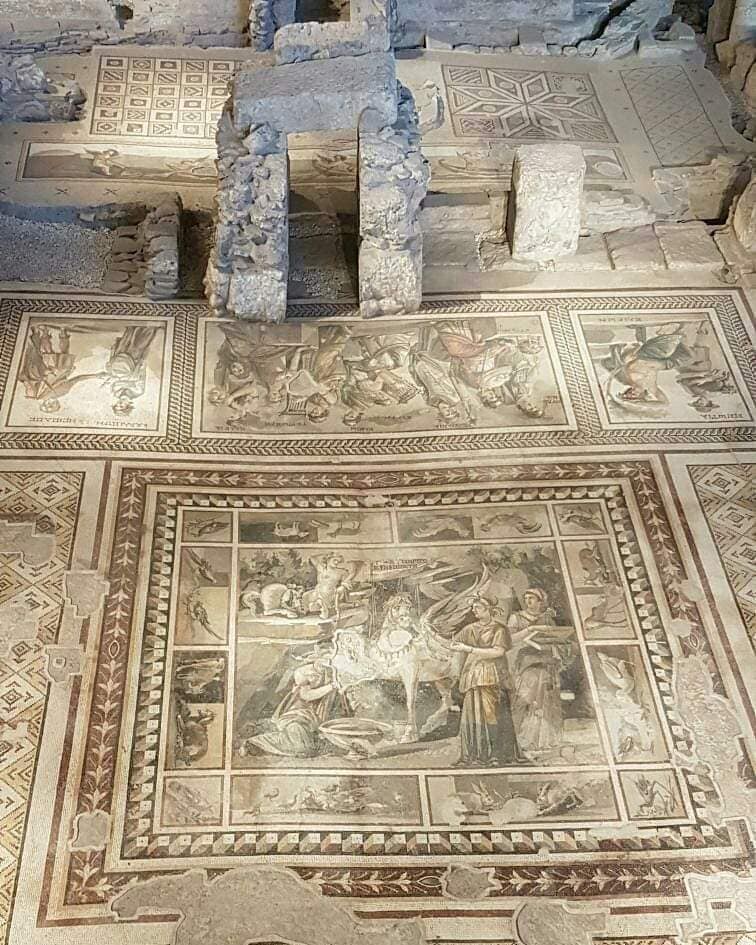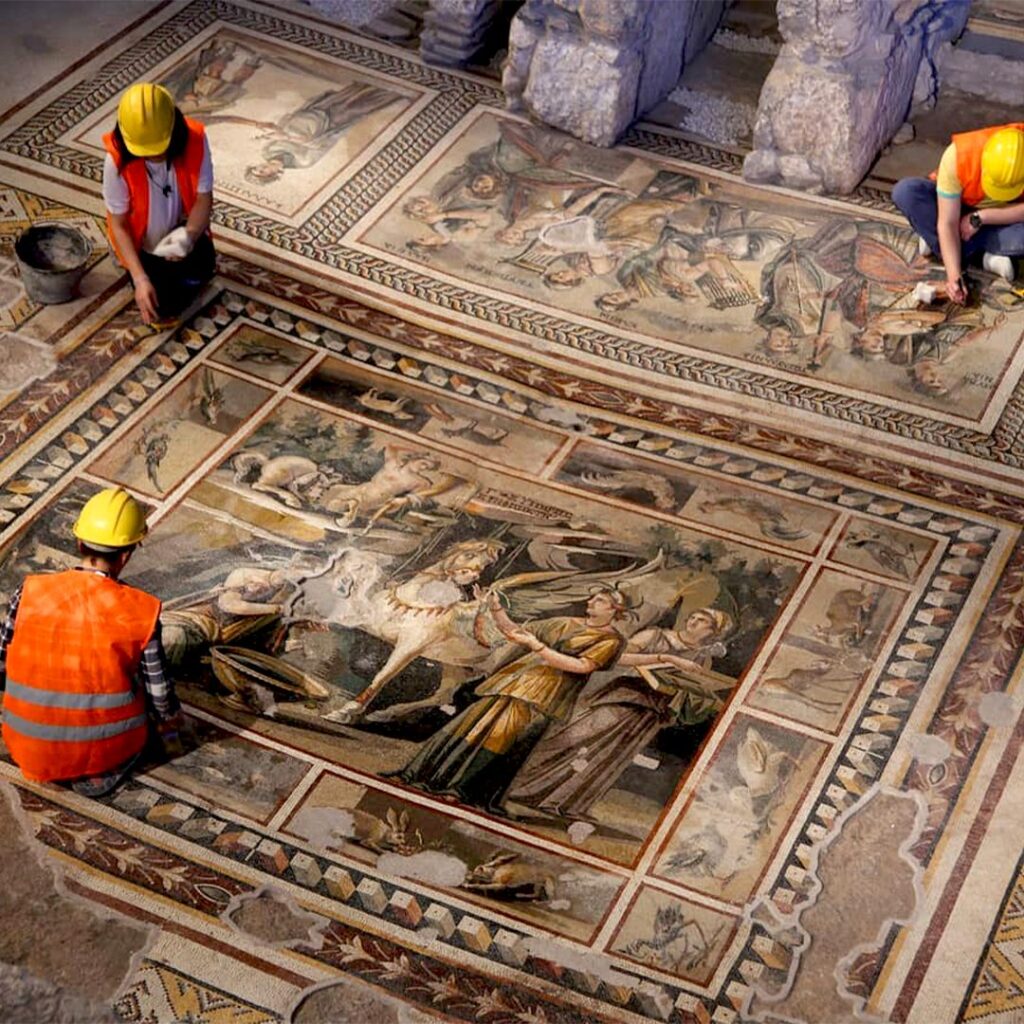In 2010, while excavating the foundation for the Antakya Museum Hotel in Turkey, an extraordinary archaeological discovery left the world in awe. It was a Roman mosaic from the 4th century AD, dubbed “the world’s largest mosaic,” covering an area of 8,000 square meters. This is not only a priceless piece of art with immense historical value but also a testament to the development and creativity of ancient Roman civilization.
The Great Roman Mosaic of Antioch
This mosaic is believed to have been the floor of a public building in the ancient city of Antioch, one of the most important urban centers of the Roman Empire. Decorated with intricate geometric patterns, this mosaic reflects not only the skill of the artisans of that time but also the prosperity of Antioch in the 4th century. Although it has endured centuries of turmoil, particularly during the major earthquakes of 526 and 528 AD, the mosaic remains remarkably intact, partly due to the seismic shifts that made certain parts appear as if gently undulating, resembling a beautiful tapestry.

The Importance of Preservation
This discovery is not only a major archaeological event but also presents a significant challenge in cultural heritage preservation. Due to its immense size and complexity, relocating or protecting this mosaic in a conventional way proved difficult. Rather than cutting or covering it up with a protective layer, archaeologists and architects collaborated to find a unique solution: the creation of a Hybrid Hotel-Museum.
The Hotel-Museum: A Fusion of Modern and Ancient
This solution not only preserved the mosaic in its original form but also provided a unique experience for visitors. By constructing a hotel on top of the mosaic, the designers created a combination of both preservation and modern tourism. Guests not only have the opportunity to admire this ancient artwork but also experience the fusion of modern architecture with ancient heritage.
The Antakya Museum Hotel is not just a place to stay; it is a living museum where people can witness the preservation process and enjoy the historical value this mosaic holds. It stands as an exemplary model of how to integrate cultural heritage with contemporary architecture, offering a new approach to preserving ancient treasures in the modern world.

A Lesson in Cultural Heritage Preservation
The story of the Antakya mosaic is not just about an important archaeological discovery; it’s also a lesson in how we can blend the past with the present. It reminds us that cultural heritage is not static but is a living story that carries timeless value. Preserving and promoting this heritage requires not only traditional methods but also innovation and creativity to meet the needs of today’s world.
In the context of globalization and rapid urban development, finding creative and effective ways to preserve cultural heritage, as demonstrated by the Antakya Hotel-Museum, is essential. It shows that we don’t have to choose between preservation and progress but can merge them together, creating spaces where both the past and present can coexist and thrive.
